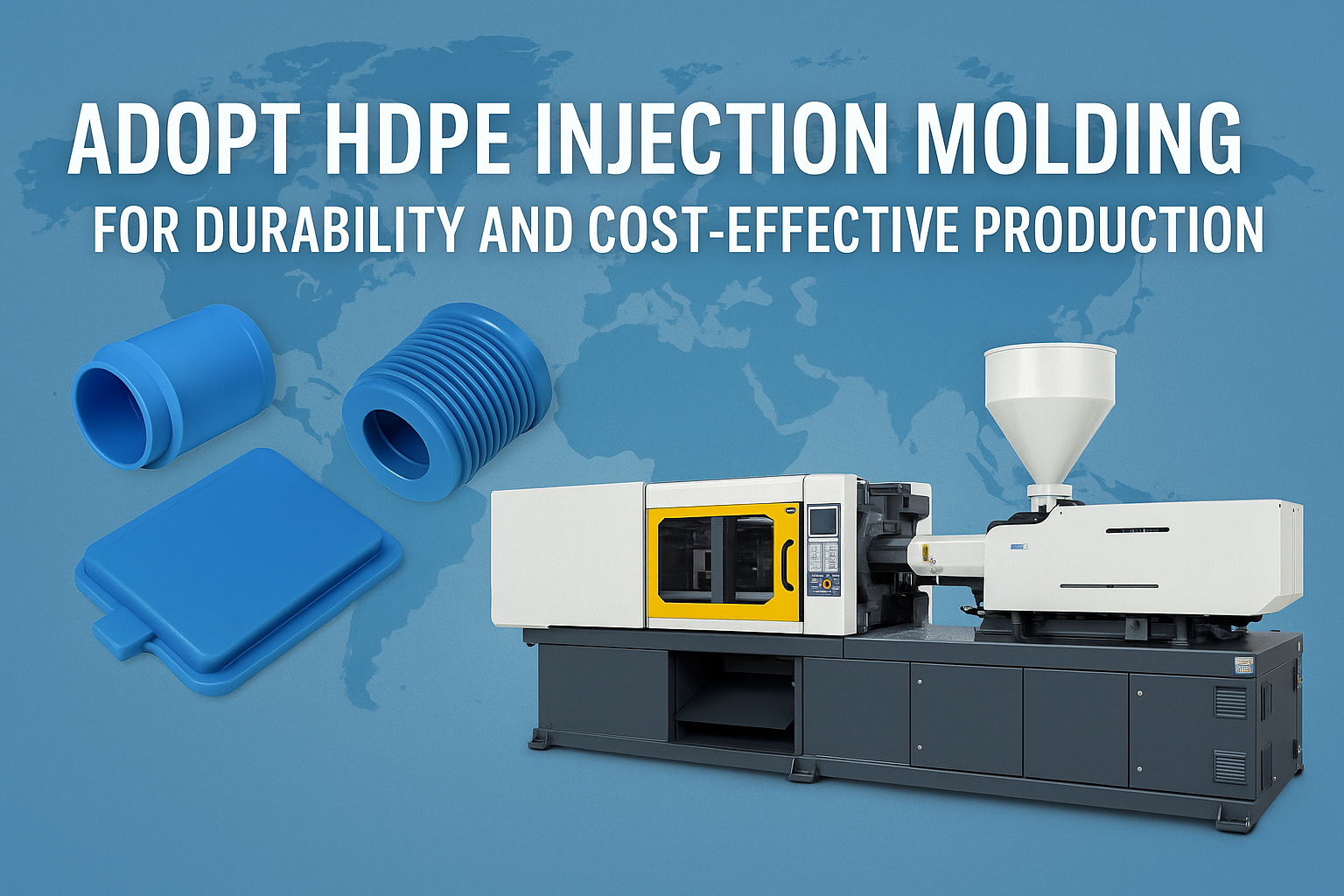Adopt HDPE Injection Molding for Durability and Cost‑Effective Production
Adopt HDPE Injection Molding for Durability and Cost‑Effective Production

High‑Density Polyethylene (HDPE) is one of the most widely used thermoplastics in the world—valued for its impressive strength‑to‑weight ratio, chemical resistance, and affordability. When paired with precision injection molding, HDPE becomes a versatile solution for manufacturers seeking rugged parts at competitive per‑unit costs. Below, we explore the key advantages of HDPE injection molding, critical design considerations, and how INTERTECH (https://www.taiwanmoldmaker.com) can help you leverage HDPE for your next project.
Why Choose HDPE?
| Property | Benefit in Real‑World Applications |
|---|---|
| High impact strength | Withstands drops, vibrations, and rough handling in logistics or outdoor use |
| Excellent chemical resistance | Suitable for detergents, fuels, and food‑contact products |
| Low moisture absorption | Maintains dimensional stability in humid environments |
| Lightweight with high stiffness | Reduces shipping costs while retaining structural integrity |
| Recyclability & FDA compliance | Popular for sustainable packaging and food‑grade containers |
Common HDPE injection‑molded products include: industrial pails, detergent caps, automotive fluid reservoirs, medical trays, toys, and household storage bins.
Cost Advantages of HDPE Injection Molding
-
Lower Resin Price – HDPE pellets are typically less expensive than engineering plastics such as PC or Nylon.
-
Fast Cycle Times – HDPE’s good flow characteristics enable shorter fill and cooling phases, boosting press throughput.
-
Minimal Finishing – Excellent surface finish “off‑the‑tool” reduces or eliminates secondary operations.
-
Long Mold Life – HDPE’s moderate processing temperatures (190–240 °C) are gentler on tooling steel, extending mold life and lowering maintenance costs.
Design & Processing Tips
-
Uniform Wall Thickness: Aim for 1.2–3 mm to prevent sink marks or warpage.
-
Draft Angles: 1–2° per side facilitates smooth ejection.
-
Ventilation: Adequate venting avoids burn marks and ensures complete fills.
-
Shrinkage Allowance: HDPE exhibits 1.5–3.0 % shrink; adjust cavity dimensions accordingly.
-
Regrind Usage: Up to 10–15 % regrind can be incorporated without compromising properties—boosting cost efficiency.
INTERTECH’s HDPE Injection Molding Capabilities
-
Press range 50 t – 650 t for small caps to large containers.
-
Family and multi‑cavity molds to cut per‑part pricing.
-
In‑house tooling: design, CNC machining, and rapid modifications.
-
ISO 9001 & ISO 13485 quality systems for consumer and medical applications.
-
Value‑added services: ultrasonic welding, pad printing, assembly, and global logistics.
Discover more about our custom molding and tooling services.
Sustainability Note
HDPE is readily recyclable (resin ID #2) and available in post‑consumer or post‑industrial grades. INTERTECH can source recycled HDPE resins to help clients meet ESG and circular‑economy targets without sacrificing performance.
Conclusion
Adopting HDPE injection molding unlocks a blend of durability, chemical resistance, and low cost—ideal for a broad spectrum of consumer and industrial goods. With INTERTECH’s material expertise, in‑house tooling, and cost‑transparent approach, you’ll achieve robust HDPE parts delivered on schedule and within budget.
Interested in HDPE for your next project? Contact INTERTECH for a free DFM review and quotation.








